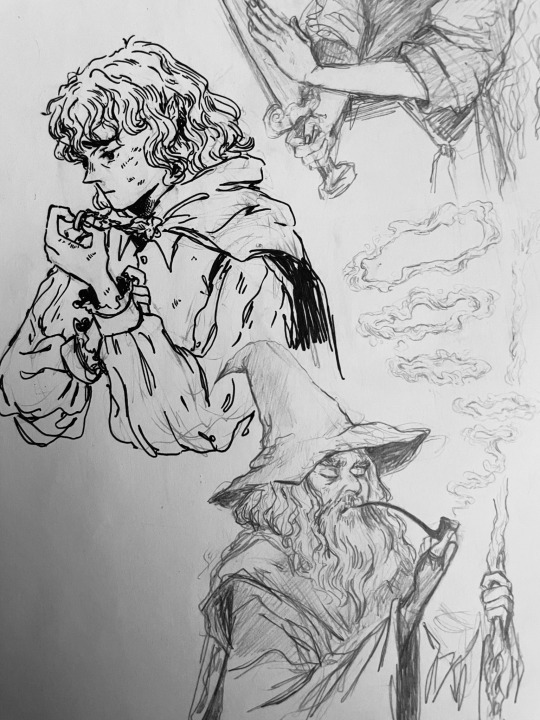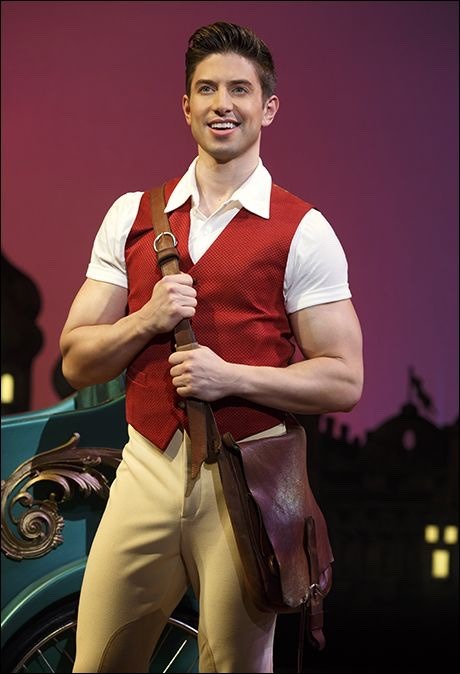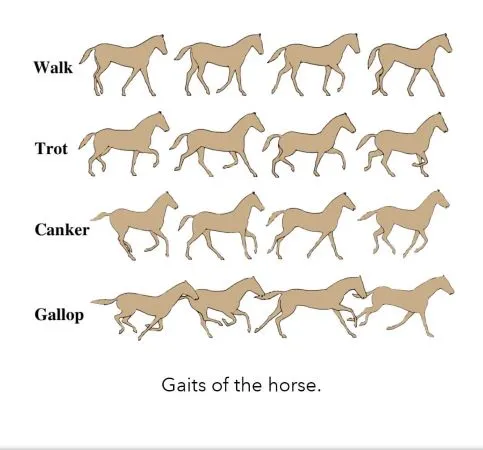#Never Fear
Text



old lotr doodles
#the obsession isn’t dead yet folks#never fear#lotr fanart#eowyn fanart#frodo fanart#gandalf fanart#aragorn fanart#legolas fanart#gimli fanart#the fellowship of the ring#lord of the rings#lord of the rings fanart#doodle#peapappa draws#peapappa
874 notes
·
View notes
Text
eddie diaz has to reconstruct his perception of a family this season he has to do this because he hasn't been on his own without someone to directly take care of before and he has to deconstruct his relationship with himself and why he sabotages his own happiness and whether that indicates that deep down what he thinks makes him happy or complete isn't what he thought it was and he has to deconstruct his identity as a father and a widower and what he means to himself and why he lets himself be destroyed for other people and he is also a queer man btw
#rocking back and forth on the floor reciting this over and over (paralleling one mr eddie diaz#who is also currently doing the same while locked up in that iconic glass closet)#he will be out soon#never fear#eddie diaz#911 abc#9-1-1#9 1 1#buddie#911 show#jwpyyy#911 season 8#s8 speculation#faves#analysis ones
91 notes
·
View notes
Text



i posted this on twitter yesterday and nobody cared but this is how i found out homumiko existed btw
#shitpost#all i have to offer is shitposts these days im sorry#but this is so funny to me#i understand and i am also a homumiko warrior now#never fear#dgs2 spoilers#JUST IN CASEEEE.
169 notes
·
View notes
Text



Gelphie cuddling in a field and (who we assume to be) Boq just casually wearing Fiyero’s vest to the Ozdust.
#this is going to be GAY.#and it’s going to HURT.#never fear#that’s what fanfics are for.#wicked movie trailer#Gelphie#fiyerboq#tincrow#fiq
23 notes
·
View notes
Text
Very exciting news: my Kickstarter campaign is live! The goal is to raise $75 in one month- a doable goal, I think :D
kickstarter
#kickstarter#maccadam#breakdown#keychain design#red-redesign g1 stunticons#never fear#i will also be reblogging this to my main but i will ALSO be making another post on my main after because i know this blog is flagged
52 notes
·
View notes
Text
In this house harrow has a mustache
#harrow#i haven't drawn her in 100 years but i still think about her constantly#never fear#it's simply because i haven't drawn anything at all in 100 years
31 notes
·
View notes
Text
Year of the Bat - Number 16
Welcome to Year of the Bat! In honor of Kevin Conroy, Arleen Sorkin, and Richard Moll, I’m counting down my Top 31 Favorite Episodes of “Batman: The Animated Series” throughout this January. We’ve reached the halfway point of the countdown!
TODAY’S EPISODE QUOTE: “Fear’s a prison, you see, and I’ve just broken out!”
Number 16 is…Never Fear.

Out of all the Scarecrow’s appearances in B:TAS, this episode from the TNBA era is generally considered to be the best. It’s one of several stories taken directly from the comics, too, as the episode is (somewhat loosely) based on the comic tale “Fear For Sale.” The original comic was published in 1987, and was chiefly created by writer Mike W. Barr, and artist Alan Davis. While that story is really, REALLY freaking good – seriously, one of the Top 5 best Scarecrow comics, in my opinion, without question – I honestly think the Animated Series adaptation is even better. Not only that, but in some ways – despite the fact no one actually dies in this story (though several come awfully close) – I would argue the cartoon is darker than said comic, as well. Wrap your head around that!
The premise focuses on the Scarecrow returning to Gotham City, presumably after a long dormancy, with a brand new form of his Fear Toxin: instead of the usual method of installing fear in people, causing them to hallucinate violent apparitions and have horrifying visions of their greatest phobias and traumas, this new gimmick TAKES AWAY people’s fear. Now, one may wonder, why is that such a bad thing? Well, here’s the thing: fear is a rational human response, intended to keep us out of danger. We run away from things that scare us, or stay alert for trouble in times of distress, for self-preservation’s sake; we avoid doing certain things at least partially because fear reminds us of the consequences of those actions.
If you REMOVE fear…then a person has no restraints, no cares, and quite possibly no conscience. This is where things get interesting: while going undercover to try and figure out Scarecrow’s plans, Bruce gets a dose of the Anti-Fear Toxin himself. Batman becomes impulsive, thrillseeking…and, most alarming of all, homicidal. It’s therefore up to Robin to keep Batman from going down a path he must not travel, while also trying to stop the Scarecrow’s newest bid for power.
The first thing most people talk about with this episode is Scarecrow himself, and for good reason. The character is given a brand new voice, provided by Jeffrey Combs for this outing, as well as a brand new look, which most people agree is far superior to the one from the first three seasons. While the Scarecrow is great in those earlier seasons, I do agree with the apparent majority that the version found in “Never Fear” is a superior rendition, simply because he’s much more creepy to behold and to hear. I was never really scared of the Scarecrow himself in his earlier outings, but this version is a whole new story. The uniqueness of his plan in this story is also worth commending, whether it’s based on an already-published comic or not.
However, I think a lot of people underestimate what a good episode this is for Batman and Robin, as well. I may or may not have said this in an earlier entry, but I actually preferred Tim Drake as Robin over Dick Grayson, at least in the Animated Series. This episode is a great example of why. Robin really takes the spotlight and initiative here, as it’s ultimately really Tim that saves the day. There’s this great scene that I absolutely love, where Batman – under the influence of Scarecrow’s toxin – tries to convince Tim, after Robin ties him up to keep him from hurting people or running into trouble, to let him go. Kevin Conroy’s performance is so convincing, it almost tricks the viewer, as well as Robin himself, but Tim doesn’t take the bait. The two really do feel like partners here, in a lot of ways, and it’s a great tale for both. Whether you love it for the heroes or the villain, “Never Fear” is arguably the pinnacle of Scarecrow storytelling in the Animated Series.
I say “arguably” because of one other episode I’ll get to later in the countdown…but that’s another story.

Tomorrow we move into the Top 15!
Hint: “Kids these days. No respect.”
#list#countdown#best#favorites#new year's special#year of the bat#top 31 btas episodes#btas#batman: the animated series#tnba#the new batman adventures#dcau#dc#batman#animation#tv#number 16#never fear#scarecrow#jonathan crane#tim drake#robin#bruce wayne
14 notes
·
View notes
Text
happy birthday bucky barnes cheers to one more year of me hoping this is the year marvel stops doing you dirty
17 notes
·
View notes
Text
“i haven’t been writing because of work”
“I haven’t been writing because of my mental health”
well, i haven’t been writing because my acrylics need an infill and they keep catching on each-other when i type because they are too long.
11 notes
·
View notes
Text
Alright, I'm gonna be lewd on main for a second: saw a thing talking about overstimulation and Astarion, and my mind thought they were talking about sexually overstimulating that gremlin.
They weren't. They meant the other way around, with Astarion doing the tormenting of his lover.
A lover which was a lady, to which I go OUCH because I'm sorry, a vag eventually starts to run a little dry and needs lube. Tell me this horny "I'm gonna LITERALLY go all night" bastard is at least stopping to occasionally lube the AstariDick The Ever Hardening back up. Like honey, sweety, Astarion, that poor girl does not need penis-burn. (Outside of my concern for random fem!Tav's vagina, I can see that scenario being potentially quite sexy.)
ANYWAY, that post DID get me thinking. My line of thinking was like so -- a penis gets very sensitive post orgasm, to the point that further stimulation can be torturously intense. Of course, combined with the whole "refractory period" thing, sure, it leads to great torment, but you don't really (in my uneducated pleb opinion) get much pay off (other than their sweet, sweet pleas to stop).
But what if... for a vampire (spawn), given that he's undead, would he... even have a refractory period? Like, we're 99% certain he's gonna be shooting blanks anyway, so there's no reason for his body to even bother with it. It's not necessary. It's a generous miracle Astarion can feel anything at all between the legs (or the ass).
So without a refractory... would he still be sensitive post orgasm? And if so... would that mean you could just... Keep going? Get the torment and force a second (and third, and fourth...) orgasm? I'm sure the sensitivity could pass eventually (or maybe not?), but still...
Maybe our favorite sassy vampire spawn would be fantastic for overstim play?
Just some thoughts. Do with them what you will.

22 notes
·
View notes
Note
Hello hello! Arch here, with yet more Horse-Queries:
One thing I've always been a tad confused by is the "pace" at which a horse would be moving at in any given situation. When I imagine, say, a large troop of horses moving from one point to another, I usually envision them all moving at a 'gallop' (I realise that's probably the wrong vocabulary to describe that sort of fast pace, so I'd welcome a correction!). But I recall some sources pretty much refuting that. So, I guess my question is: if you're expecting to move large distances without too much impetus for speed, how much faster than a walking person would a horse with rider and some equipment be able to move?
I'm going to answer your question, but I'm also going to teach you about paces because this confuses a lot of people in my experience. If you want to skip to the direct answer, I'll mark it with ***.
What is a horse's 'pace'. So horses have something called a stride, which is the distance it takes for all four feet to hit the ground once. A pace is the speed of a stride. So a faster pace means the feet are moving further and hitting the ground more often in a certain amount of time. That's the simple part.
Horses also have gaits, which are the patterns in which their feet move. The normal horse has four, the walk, the trot, the canter, and the gallop. For some reason, some American cowboys call a canter a gallop? No clue, but the fact is that canter and gallop are different because the pattern of footfalls is different. A canter is also referred to as a lope in Western riding. A visual is below. (please ignore the misspelling, is it not canker, its canter, this was the best image i found of all four gaits together)

As can be seen, a walk is a four beat gait, with each foot hitting the ground not in concert with any other foot. The trot(also called a jog in British English) is a two beat gait, with diagonal pairs moving at the same time. A canter is a three beat gait, with one hind leg and one front leg moving in concert, and the other front and hind moving separately. The gallop is a four beat gait, with a moment of suspension.
When it comes to riding horses over distance, these patterns are very important. The gallop is the fastest gait, but it requires a huge amount of energy due to only one leg hitting the ground at a time. This puts enormous stress on the body. Racehorses have shattered legs while racing due to having the entire body weight and stress on one single foot. No horse can maintain a gallop for more than a few minutes, even top racers.
The canter is less strenuous, but it is still difficult and potentially dangerous to maintain for long periods of time, due to the shifting of balance from foot to foot. The walk, of course, is the easiest gait to maintain over long distances, and most horses can regain stamina at the walk. But the best gait for long distances (for normal horses, I'll get to that) is the trot. Due to the diagonal pairs, a trot is the most stable and efficient gait, requiring the least amount of balance control, and also benefiting from the hind legs usually stepping in the exact foot print of the front legs. The trot averages 8 mph, or about 12.9 km/h. In comparison, a human walk is about 3 mph or 5.1 km/h.
***A horse and rider in good condition, over relatively flat ground at a trot, would be over twice as fast as a human walking.
But, here's the kicker, not every horse has only four gaits. Many breeds of horse, and many more that have gone extinct since industrialization, had five or six gaits. These are referred to in modern times as gaited horses. These special gaits were genetically inherited, and cannot be trained. A horse is either born with extra gaits or not.
Some additional gaits are: the amble, the pace, the sobreandando, the Tölt, the running walk, the foxtrot, the rack, and many more.
These are pertinent to the question because some of these gaits, in particular the Tölt, can be performed at speeds reaching those of a canter. Now, I am not an expert in gaited horses, but the Tölt, the foxtrot, and the running walk were all breed specifically for covering large distances quickly and comfortably. However, I cannot find a source I trust for how long these paces can be maintained at top speed. Due to the smoothness of the gaits, I would hazard a guess that it would be as far, if not further, than a trot, but that is my own guesstimate.
A historical anecdote, during medieval warfare, ambling horses were often used as riding horses to reach a battle site, where the courser or destrier would then be mounted and put into use. Centuries later, the ambling Tennessee Walking Horse and Missouri Foxtrotter were both used in the American South and West for long distance travel over rocky and mountainous terrain, and are known for being incredibly comfortable, as well as beautiful horses.
This became possibly my longest ever post, but I believe I answered your question and then some. Thank you for letting me go full horse-obsessed nerd once again!
#horses#writeblr reference#writing horses#if you or someone you know has questions about horses related things#never fear#I'm here#and I will tell you everything you never knew you didn't want to know#Don't even get me started on horses in film and media#I have references
11 notes
·
View notes
Text
gift for mutual!!! Sorry for the tag but eee!! @justmwahstruly

Theyre friends, methinks...
16 notes
·
View notes
Text
I'm sorry to my 911 Lone Star mutuals (which is all of you that follow me ❤️) but it's gonna be interview with the vampire shit on my blog for a little bit I think. new hyperfixation unlocked and idk how long it's gonna last 😭
#but im still reading and writing lone star and og stuff occasionally#never fear#interview with the vampire#911 lone star
4 notes
·
View notes
Text
Where'd we leave off? Oh, right. Thyme's mom is bought and destroyed Gorya's home, leaving Gorya homeless. Things are moving very quickly.



They are literally the cutest little army

"Whooo!"
mjjjjjjjjj!
4 notes
·
View notes
Text
'Don't be afraid of anything, least of all me.'
L.P. Hartley, from The Harness Room
#reassurance#nothing's gonna hurt you baby#never fear#gentle#relationship dynamics#relationship goals#quotes#lit#words#excerpts#quote#literature#l.p. hartley#the harness room
4 notes
·
View notes
Text
oh god I'm getting OLD
#rrr#okay so if you ever worried about like. not finding people your age attractive as you get old bc of stereotypical beauty standards#NEVER FEAR#IT HAPPENS#SOONER THAN YOU THINK#there's this guy I've been dancing with for a while now#he's quite good and has been giving me lessons (4 free)#which he does with several other folks! don't be weird!#very nice guy. mid-to-late 20s#he is also balding just a tad#like receding hairline he's cut his hair short for now will probably shave it all off in 5-10 years balding ya know?#which is a bit of a dealbreaker ngl#it's NOT BAD it's just a physical feature i couldn't get over#but i've been spending a lot of time with him and getting to know him pretty well#and my brain is unable to tell the difference between 'we're on top of each other for dance reasons' and 'we're on top of each other 👀'#so of course. mild crush.#well no biggie i'm chill about my crushes (lie) and can act normal (ie not a creep) to them (truth)#so i thought nothing else of it#well. lots of receding hairlines at this conference#turns out they are no longer a dealbreaker for me#my brain's like 'that guy's hot' and then i'm like 'he's balding and probably has kids' and my brain's like 'but Dance Man isn't'#and so yea. don't be worried about that (bc that was something i was mildly afraid of for some reason) bc your brain will figure itself out#that's what's new on glee
4 notes
·
View notes